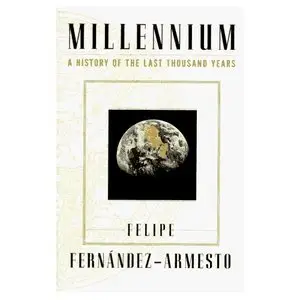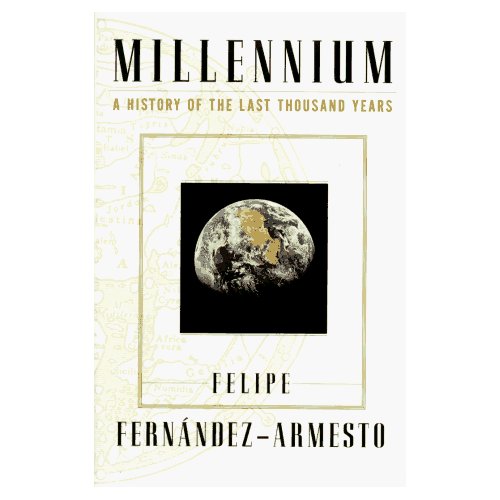Felipe Fernandez-Armesto, "Millennium: A History of the Last Thousand Years"
Scribner | October 16, 1995 | ISBN: 0684803615 | siPDF | 816 pages | 28.7 MB
Scribner | October 16, 1995 | ISBN: 0684803615 | siPDF | 816 pages | 28.7 MB
From Publishers Weekly
In this freewheeling, selective, iconoclastic history of the world from the 10th century to the present, Fernandez-Armesto concludes that the West's domination of global affairs was far from inevitable and is likely to abate as economic power and initiatives in technology and ideas shift decisively to Pacific rim nations. Editor of The Times Guide to the Peoples of Europe, the author first chronicles the slow, fitful consolidation of Islamic civilization, imperial China, medieval Europe and the Byzantine empire. The great age of European expansion unfolds here in a world full of aggressive competitors. In place of the traditional picture of a largely passive non-European world in arrested development, Fernandez-Armesto portrays the Turkish, Russian and Mongol empires, the Aztec and Inca civilizations, the empires of Morocco, Mali and Ethiopia as having their places on the world stage. Among his more provocative gestures are his portrayals of Washington and Jefferson as provincial English gentlemen, his downplaying of the Renaissance's intellectual impact and his vision of California's future as "an Asiatic land, bound to the orient by transpacific links." Even so, this vivid tapestry, generously illustrated, is continually engaging and challenging.
From Library Journal
Surveying the last 1000 years of human history, Fernandez-Armesto (Columbus, LJ 10/15/91) deals with Islamic countries, China, Africa, and South America, as well as Western civilization and the recent rise of various Pacific nations. Writing in an authoritative yet not dry or academic style, he recounts the rise and decline of major civilizations. His use of the revealing historical detail, e.g., the rise of the Boy Scouts viewed toward understanding British thought of the period, enlivens the tome and adds to the reader's depth of understanding. The author is largely successful in presenting the last millennium in terms of the ebb and flow of power among different cultures. His unusual historical perspectives–his concentration on non-Western cultures and examination of the various ways in which different cultures "saw" themselves–makes this volume desirable reading for scholars and informed lay readers.
From Booklist
In this ambitious, unique, and masterful work, which succeeds as both a scholarly project and a piece of popular history, the author writes a history of our millennium from a truly global perspective. The brilliant civilizations of Islam and China are justifiably shown as vastly superior to the "barbaric" West in material, intellectual, and perhaps even moral resources for much of this period. His analysis of the gradual assertion of Western supremacy is superbly reasoned; he also excels at gauging the constant interaction and cross-cultural fertilization between civilizations. How many world histories make the effort to examine the competition between Chinese and Spanish influences in the Philippine Islands, for instance? Like other outstanding historians, Fernandez-Armesto can personalize broad historical trends without sinking into triviality. He teaches us about the violence and reverence of Christianity through the career of an obscure Catalonian aristocrat; by tracing the life of St. Vladimir, he instructs us in the sources of Russian religious and cultural messianic concepts. This is history written at its best: grand in scale and outlook but at the same time precise and focused.
Product Description
An engaging work by a prize-winning historian traces the progress and regress of the world's civilizations over the past thousand years and shows how the capacity of one people to influence another has shifted geographically. 35,000 first printing.



